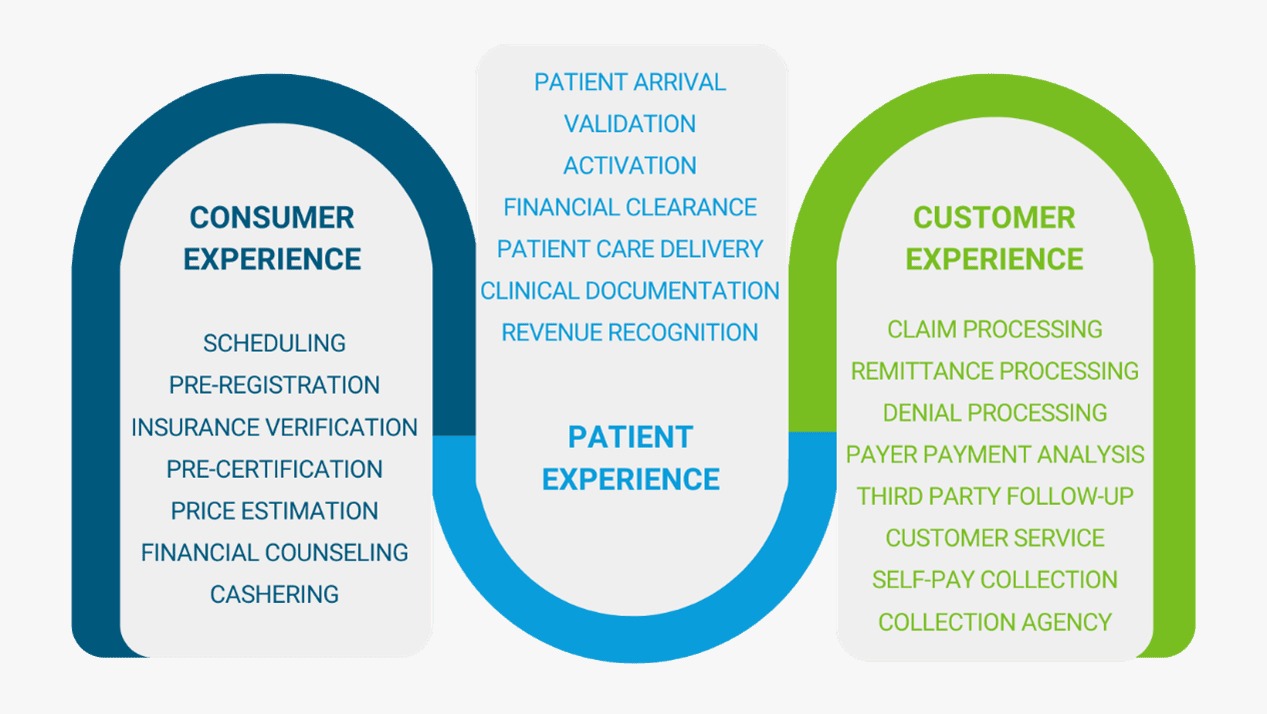Optimizing Your Revenue Cycle to Minimize A/R Days and Enhance Cash Flow in Healthcare
The healthcare industry faces unique challenges in managing its revenue cycle, with delayed reimbursements and increased accounts receivable (A/R) days significantly impacting cash flow. Streamlining the revenue cycle is crucial for healthcare providers to maintain financial stability and improve service delivery. This article explores effective strategies for reducing A/R days and enhancing cash flow in healthcare settings.
Understanding the Revenue Cycle

The revenue cycle encompasses all administrative and clinical functions that contribute to capturing, managing, and collecting patient service revenue. Key stages include patient registration, charge capture, claim submission, payment posting, and collections. Inefficiencies at any stage can lead to delays and increased A/R days, thereby affecting the cash flow.
Recognizing the Consequences of Prolonged A/R Days
The financial strain of prolonged accounts receivable (A/R) days extends far beyond lost revenue. Delayed reimbursements can result in:
1.Diminished Cash Flow
- Operational Challenges: Limited access to working capital can hinder the ability to pay staff, invest in equipment upgrades, and sustain essential operations.
2.Higher Administrative Costs
- Resource Allocation: Managing overdue accounts demands additional staff time and resources, putting further pressure on already tight budgets.
3.Weakened Patient Relationships
- Patient Confusion and Discontent: Delayed billing and collection efforts can lead to confusion and frustration among patients, potentially affecting their perception of your practice.
Strategies for Faster Reimbursements and Reduced A/R Days
1.Automating Processes
- Electronic Health Records (EHRs): Implementing EHRs can streamline patient information management, reduce errors, and expedite the billing process.
- Claim Management Software : Utilizing advanced claim management software can automate claim submission, tracking, and follow-up, ensuring quicker reimbursements.
2.Enhancing Data Accuracy
- Accurate Patient Information: Ensuring that patient data is accurate and up-to-date from the point of registration can prevent billing errors and claim denials.
- Coding Precision: Employing certified medical coders to ensure precise coding can reduce the incidence of claim rejections and delays.
3. Optimizing Billing Practices
- Electronic Health Records (EHRs): Implementing EHRs can streamline patient information management, reduce errors, and expedite the billing process.
- Claim Management Software : Utilizing advanced claim management software can automate claim submission, tracking, and follow-up, ensuring quicker reimbursements.
3. Strengthening Follow-Up Procedures
- Automated Reminders: Setting up automated reminders for outstanding payments can enhance the efficiency of the collections process.
- Dedicated Follow-Up Teams : Having dedicated teams to follow up on unpaid claims can ensure that issues are addressed promptly, reducing the time to payment.
4. Patient Financial Counseling
- Upfront Cost Transparency: Providing patients with clear information about their financial responsibilities before services are rendered can reduce payment delays.
- Flexible Payment Options : Offering flexible payment plans can help patients manage their financial obligations, leading to quicker collections.
5. Leveraging Analytics
- Performance Metrics : Regularly monitoring key performance indicators (KPIs) such as days in A/R, claim denial rates, and collection rates can provide insights into areas needing improvement.
- Predictive Analytics : Utilizing predictive analytics can help forecast trends in patient billing and payments, allowing for proactive adjustments to the revenue cycle process.
6. Benefits of Streamlining the Revenue Cycle
- Reduced A/R Days : By implementing efficient processes, healthcare providers can significantly reduce the number of days it takes to collect payments, improving cash flow.
- Improved Cash Flow : Enhanced revenue cycle management ensures that healthcare providers have a steady cash flow, enabling them to invest in better patient care and facility improvements.
- Enhanced Patient Satisfaction : Streamlined billing processes and clear communication about financial responsibilities can improve patient satisfaction and trust.
- Regulatory Compliance : Efficient revenue cycle management helps ensure compliance with healthcare regulations, reducing the risk of penalties and audits.
Conclusion
Streamlining the revenue cycle is essential for reducing A/R days and improving cash flow in healthcare. By leveraging technology, enhancing data accuracy, optimizing billing practices, strengthening follow-up procedures, providing patient financial counseling, and utilizing analytics, healthcare providers can achieve financial stability and focus on delivering high-quality patient care. Implementing these strategies not only enhances the efficiency of the revenue cycle but also contributes to the overall health of the healthcare organization.



